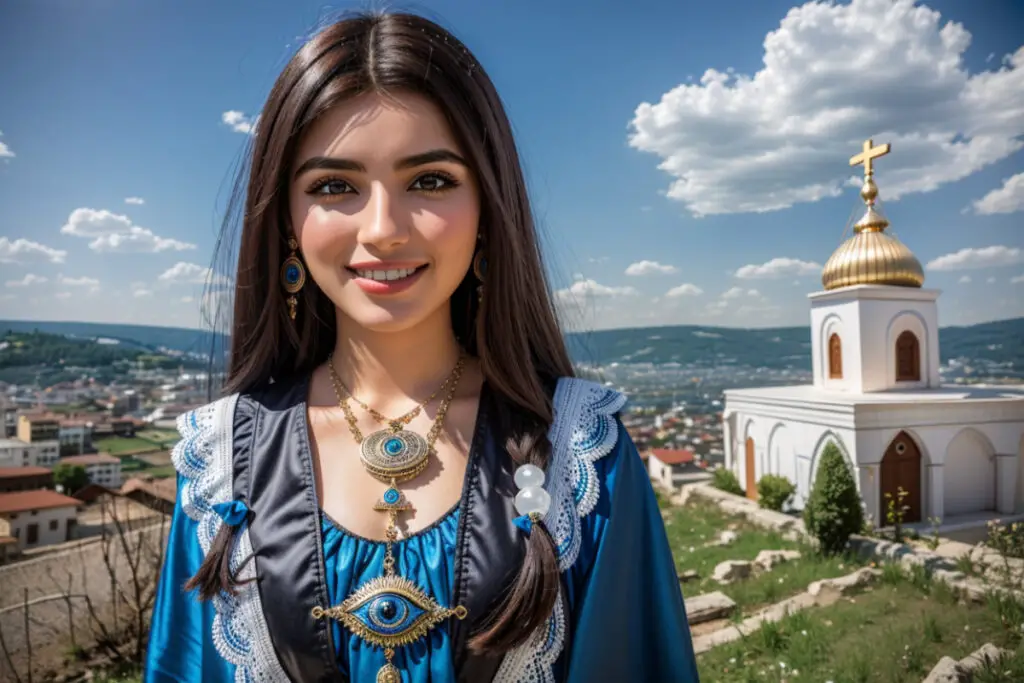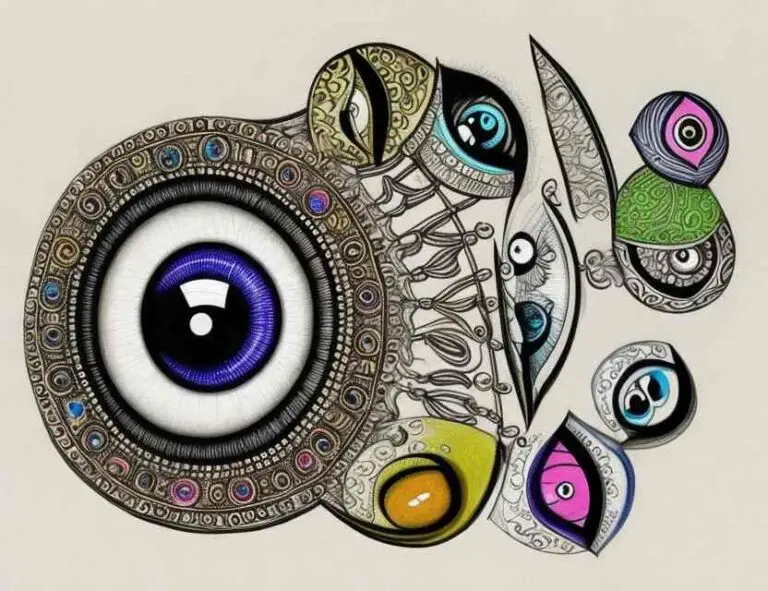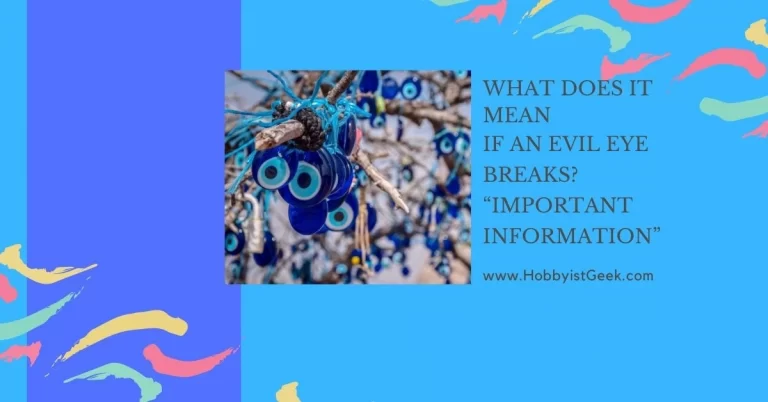Evil Eye History Eastern Europe Countries: Explained
5 Takeaways For Evil Eye History Eastern Europe Countries
- The evil eye is a supernatural belief in a curse brought about by a malevolent glare, usually given to a person when one is unaware. It dates back about 5,000 years and has been found in many cultures in the Mediterranean region, as well as Western Asia and Central Asia [1].
- The concept of the evil eye is believed in various Eastern European countries including Albania, Greece, Turkey, Romania, and Bulgaria [1].
- Belief in the evil eye is ancient and widespread, occurring in different cultures and traditions such as Greek, Roman, Jewish, Islamic, Buddhist, Hindu, indigenous, peasant, and folk societies [2].
- The evil eye is often believed to cause harm or misfortune, particularly to vulnerable individuals such as pregnant women, children, and animals [2].
- Protective measures against the evil eye vary between cultures, ranging from using charms, amulets, or talismans to ward off its effects, to performing rituals or using specific gestures [2].
The countries in Eastern Europe that believe in the evil eye:
In Eastern Europe, the belief in the evil eye runs deep, with countries like Albania, Greece, Turkey, Romania, and Bulgaria having a rich history intertwined with this fascinating concept.
Evil eye mythology has shaped the cultural fabric in these regions for centuries.
Ancient civilizations such as the Greeks and Romans held strong beliefs in the power of the evil eye, attributing it to envy and malicious intent.
In Albania, one can find a plethora of evil eye folklore passed down from generation to generation.
It is believed that certain individuals possess the ability to cast an evil eye unknowingly upon others through jealousy or anger.
To protect themselves from these malevolent gazes, Albanians have developed various practices and traditions.
For instance, they often wear amulets or talismans known as “buka” or “xhenti” as a charm against this negative energy.
Similarly, Greece boasts a rich tapestry of evil eye beliefs deeply rooted in its history and culture.
From ancient times to present-day superstitions, Greeks have embraced different rituals and symbols to ward off the curse.
The blue glass “mati,” also known as an “apotropaic” amulet shaped like an eye, is commonly used for protection against the evil eye’s harm.
Turkey also embraces a strong belief in the power of the evil eye. The Nazar Boncugu – an iconic blue glass bead with concentric circles – is widely recognized as a symbol of protection against ill intentions.
Turkish people adorn their homes and wear jewelry featuring this emblematic charm.
Romania and Bulgaria share similar beliefs regarding the evil eye’s existence and impact on people’s lives.
In both countries’ folklore, tales are woven around individuals who possess extraordinary abilities to cast curses through their gaze due to envy or resentment.
Amulets and charms in various forms are employed by locals to safeguard themselves from such harmful influences.
Throughout Eastern Europe historical references and religious texts abound with mentions of the evil eye, emphasizing its ancient traditions and cultural significance.
The belief in its existence has become deeply ingrained within these societies, influencing their daily lives, customs, and practices.
It is truly intriguing to witness how the evil eye’s superstitions have endured across time and borders, captivating the imagination of people from different walks of life.
Whether it be through protective talismans or rituals passed down through generations, Eastern Europe remains a region where the belief in the power of the evil eye thrives alongside a rich tapestry of folklore and mythology.
How Old Is The History of the EVIL EYE Belief System?
What Is The History of the evil eye in Albania?
The belief in the evil eye holds a significant place in the cultural history of Albania.
Dating back to ancient times, the evil eye has been deeply ingrained in Albanian folklore and superstitions.
In Albanian mythology, it is believed that certain individuals possess the power to cast an evil eye, consciously or unconsciously, upon others.
This malevolent gaze is believed to bring misfortune, illness, and even death. Ancient traditions surrounding the evil eye have been passed down through generations in Albania.
It is said that newborn babies are particularly vulnerable to its effects, and protective measures are taken to ward off its negative energy.
One practice involves tying a red thread or ribbon around a baby’s wrist or neck as a form of protection against the evil eye.
The symbolism of the evil eye is also prevalent in Albanian culture. Talismans known as “syndet” are commonly used as protective amulets against its influences.
These amulets often feature an intricate design resembling an open hand with an eye at its center.
The image serves as a ward against malicious intent and is believed to deflect any negative energy directed toward the wearer.
Furthermore, references to the evil eye can be found in religious texts followed by Albanians, such as Islam and Christianity.
Both faiths acknowledge the existence of this powerful gaze and offer prayers and rituals for protection from its harm.
In contemporary Albanian society, belief in the evil eye persists despite modernization and changing cultural norms.
Many individuals still seek remedies from practitioners known as “xhaxhallar” who possess knowledge of ancient rituals for removing curses caused by the evil eye.
Albania’s deep-rooted connection with beliefs surrounding the evil eye showcases not only its historical significance but also how folklore and superstitions continue to shape cultural practices today.
Whether it be through protective talismans or seeking assistance from traditional healers, Albanians have maintained their faith in combating this pervasive cultural phenomenon.
What Is The History of the evil eye in Greece?
Greece, a country rich in history and mythology, has deep-rooted beliefs in the evil eye. Evil eye superstitions and folklore have been an integral part of Greek culture for centuries.
Ancient Greeks believed that the evil eye had the power to cause harm or misfortune to others through envy or jealousy.
The concept of the evil eye can be traced back to ancient civilizations, where it was considered both a curse and a protective talisman.
In Greek mythology, the origins of the evil eye can be found in various legends.
One popular tale involves the goddess Athena, who was said to possess a piercing gaze that could bring destruction to those she looked upon with envy or anger.
Another famous myth tells of Medusa, whose gaze turned people into stone. The belief in the evil eye is deeply ingrained in Greek daily life even today.
It is not uncommon to find blue glass beads or ‘mati’ charms adorning homes, cars, or even worn as jewelry. These talismans are believed to ward off any negative energy caused by someone casting an envious glance.
Evil eye practices vary across regions within Greece. In some areas, rituals involving prayers and incantations are performed to counteract the effects of the evil eye.
Others may resort to more practical measures such as wearing protective amulets or performing symbolic gestures like spitting three times.
The impact of the evil eye on Greek culture goes beyond mere superstition; it holds significant cultural significance as well.
The belief serves as a reminder for Greeks to show humility and avoid boasting about their successes openly for fear of attracting envy and subsequent harm from others.
To protect themselves from this malevolent force, Greeks have developed various traditions and practices over time.
These range from carrying specific herbs known for their protective qualities (such as basil) to performing rituals during special occasions like weddings or births.
Greece’s history with the evil eye runs deep within its culture and mythology.
This belief in the power of envy and its potential to cause harm has shaped Greek traditions, rituals, and everyday practices.
Whether it be through ancient legends or modern-day talismans, the evil eye continues to hold a prominent place in Greek society, reminding its people to remain vigilant against envy and to protect themselves from its harmful effects.

What Is The History of the evil eye in Turkey?
Turkey, a country rich in cultural heritage and folklore, has a deep-rooted history when it comes to the evil eye.
The belief in the evil eye holds great significance in Turkish culture, and its origins can be traced back to ancient times. Evil eye superstitions have been ingrained in the daily lives of Turks for centuries, shaping their beliefs and practices.
The symbolism of the evil eye is prevalent throughout Turkey, with its distinctive blue color adorning various objects like jewelry, home decor, and even clothing.
The presence of this protective symbol aims to ward off malevolent glances and bring good luck.
Many people hang evil eye charms or amulets in their homes or wear them as jewelry as a means of protection against negative energies. Evil eye practices are deeply embedded in Turkish traditions.
One such practice involves using a “Nazar Boncuk,” which is a glass bead with concentric circles resembling an eye.
This Nazar Boncuk is believed to absorb any harm that might come from an envious gaze and protect the wearer from its effects.
Furthermore, the cultural significance of the evil eye can be witnessed during special occasions like births or weddings.
It is common for newborns to receive an evil eye amulet as a gift to safeguard them from any ill-wishing.
Likewise, at weddings, guests often wear small blue beads or pins as a way to wish good luck to the couple’s union.
The history of the evil eye in Turkey extends beyond mere superstition; it also finds mention in religious texts such as the Quran.
Islamic beliefs acknowledge the existence of envy and its potential harm while emphasizing seeking protection through prayer and recitation of specific verses.
Moreover, ancient civilizations that once thrived on Turkish land also left traces of their belief in the evil eye.
Hittite artifacts dating back thousands of years depict protective symbols resembling an evil eye motif.
Turkey’s history regarding the evil eye is a tapestry woven with cultural traditions, spiritual beliefs, and ancient folklore.
The evil eye’s significance permeates through various aspects of Turkish society, including daily practices, special occasions, and even religious texts.
It beautifully showcases how belief systems can transcend time and continue to hold deep meaning in a nation’s culture.
What Is The History of the evil eye in Romania?
Romania, with its rich folklore and deep-rooted superstitions, has a long-standing belief in the evil eye.
The evil eye holds significant cultural significance in Romanian society, as it is seen as a powerful force capable of inflicting harm or misfortune upon those who fall victim to its gaze.
This belief in the evil eye dates back centuries and can be traced to the ancient traditions and practices of various civilizations that once thrived in this region.
In Romanian folklore, the concept of the evil eye is often intertwined with other mythical creatures and supernatural phenomena.
It is said that certain individuals possess an innate ability to cast an evil gaze upon others, often unintentionally.
These individuals are believed to possess a particular power that can bring about illness, bad luck, or even death to those unfortunate enough to be targeted by their envious eyes.
Historical references highlight how the evil eye has been deeply ingrained within Romanian culture for centuries.
Ancient texts and folktales depict the presence of charms, amulets, and talismans used as protective measures against this malevolent force.
These objects carry symbolic representations meant to ward off or nullify the effects of the evil eye.
In Romania’s rural communities, rituals and practices have been passed down through generations as a means of protecting oneself from this perceived threat.
One such practice involves using red threads tied around wrists or necks to ward off the gaze of ill-intentioned individuals.
Additionally, certain plants or herbs are believed to possess protective qualities against the evil eye when worn or hung near doorways.
Interestingly enough, belief in the evil eye extends beyond Romania’s borders and finds common ground with neighboring countries such as Greece and Turkey.
While each culture may have its unique interpretations and practices regarding protection against this malevolent force, there exists an undeniable shared understanding of its existence across these regions.
Romania has a longstanding history rooted in belief around the concept of the evil eye.
From ancient civilizations to folklore and cultural practices, the evil eye’s influence can be seen throughout Romanian society.
Whether it be through ancient traditions, protective charms, or superstitions, the belief in the evil eye serves as a testament to the deeply ingrained cultural significance it holds in this enchanting country.

What Is The History of the evil eye in Bulgaria?
Bulgaria, a country located in Eastern Europe, has a rich history when it comes to beliefs surrounding the evil eye. Evil eye superstitions have been deeply ingrained in Bulgarian folklore and cultural practices for centuries.
The concept of the evil eye, known as “Zlyo Oko” in Bulgarian, holds great significance within the country’s traditions.
In Bulgaria, it is believed that certain individuals possess the power to cast an evil gaze upon others, resulting in misfortune or harm.
This belief is closely tied to the notion of jealousy and envy.
The evil eye is often seen as a result of someone harboring negative feelings towards another person’s success or good fortune.
To protect themselves from the malevolent effects of the evil eye, Bulgarians have developed various rituals and practices.
One commonly used method involves wearing amulets or talismans with symbolic designs believed to ward off the evil eye.
These protective charms can take various forms such as blue glass beads or figures resembling eyes.
Furthermore, another prevalent practice in Bulgaria involves performing rituals to counteract the effects of the evil eye.
These rituals often include reciting prayers or performing specific gestures with accompanying incantations.
They are passed down through generations, preserving ancient traditions and cultural beliefs. The presence of evil eye beliefs can be traced back throughout Bulgaria’s long history.
In fact, references to this phenomenon can even be found in ancient civilizations inhabiting these lands many centuries ago.
The belief and fear associated with the power of an envious gaze have persisted over time due to their deep-rooted influence on Bulgarian culture and society.
Though not limited exclusively to Bulgaria, this aspect of folklore continues to hold significant importance within its boundaries.
By embracing these traditional practices and customs aimed at protection against the evil eye, Bulgarians demonstrate their commitment to preserving their cultural heritage while safeguarding against the potential harm that may arise from envious glances cast their way.
Final Words
The concept of the evil eye holds a significant place in the cultural beliefs of Eastern European countries like Albania, Greece, Turkey, Romania, and Bulgaria. It is a supernatural belief in a curse caused by a malevolent gaze and has existed for thousands of years across various cultures and traditions.
The evil eye is believed to bring misfortune or harm, particularly to vulnerable individuals, and as a result, different protective measures have been adopted to ward off its effects. These measures vary between cultures but often involve the use of charms, amulets, or rituals to counteract the curse.
The evil eye continues to be a part of the cultural fabric of Eastern Europe, with its historical roots and beliefs still influencing the lives of people in the region.
If you enjoyed reading this article you need to read Evil Eye History Middle East: Exploring the Ancient Beliefs in Middle Eastern Countries.
Frequently Asked Questions
What is the evil eye?
The evil eye is a supernatural belief in a curse caused by a malevolent gaze. It is believed to bring misfortune or harm to the recipient of the gaze.
Which Eastern European countries believe in the evil eye?
Eastern European countries such as Albania, Greece, Turkey, Romania, and Bulgaria hold beliefs in the concept of the evil eye.
How long has the evil eye belief existed?
The belief in the evil eye dates back approximately 5,000 years and has been found in various cultures across the Mediterranean region, Western Asia, and Central Asia.
Who is believed to be particularly susceptible to the evil eye?
Pregnant women, children, and animals are often considered to be particularly susceptible to the effects of the evil eye.
What are some protective measures against the evil eye?
Protective measures against the evil eye vary between cultures. They can include wearing charms or amulets, performing rituals, or using specific gestures to ward off its effects.
Resources
- Wikipedia. “Evil eye.” 11
- Britannica. “Evil eye | Protection, Superstition & Beliefs.” 22
- Pew Research Center. “Religious beliefs.” 33
- BBC Culture. “The strange power of the ‘evil eye’.” 44
- Svana Design. “Evil Eye Culture.” 55
- Evil Eye Hand: Unveiling the Mystical Origins and Meanings - February 2, 2024
- Amegreen Amethyst Meaning: Discover the Hidden Magic! - February 2, 2024
- Is The Evil Eye Bad?: A Deep Dive into Evil Eye Taboos - February 2, 2024









